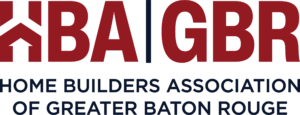Rising mortgage rates, high inflation, ongoing building material supply chain disruptions, and elevated home prices contributed to housing affordability falling – yet again – to its lowest point since the Great Recession in the third quarter of 2022. According to the NAHB/Wells Fargo Housing Opportunity Index (HOI), just 42.2% of new and existing homes sold between the beginning of July… Read More ›
Per the Mortgage Bankers Association’s (MBA) survey through the week ending November 4th, total mortgage activity declined 0.1% from the previous week and the average 30-year fixed-rate mortgage (FRM) rate rose eight basis points to 7.14%. The FRM rate has risen 33 basis points over the past month and has been above 7% for the past three weeks. The Market… Read More ›
According to the Federal Reserve’s latest G.19 Consumer Credit report, consumer credit (ex-real estate) grew at a seasonal adjusted annual rate (SAAR) of 6.8% in the third quarter of 2022. Revolving debt increased at a 12.9% rate, more than double the pace of nonrevolving debt (+4.9%). Credit card interest rates reached 16.3%, the highest level since the inception of the… Read More ›
NAHB analysis of information published in Builder Magazine’s annual Local Leaders lists shows that large builders gained market share across all tiers on average from 2009 to 2021 in major housing markets; market concentration, as calculated with top four firms in a metropolitan statistical area (MSA), has also increased, but has leveled off over the last four years. Figure 1 shows… Read More ›
Job growth slowed in October as the Fed continues its tightening of financial conditions to fight inflation, but the overall labor market remains tight. The unemployment rate increased by 0.2 percentage points to 3.7% in October as the number of persons in the labor force decreased for the second straight month. Total nonfarm payroll employment increased by 261,000 in October,… Read More ›
Spurred by elevated savings early in the pandemic and encouraged by lower interest rates, rising numbers of young adults left parental homes in 2021. As a result, the share of young adults ages 25-34 living with parents or parents-in-law declined and now stands at 20.2%, according to NAHB’s analysis of the 2021 American Community Survey (ACS) Public Use Microdata Sample… Read More ›








